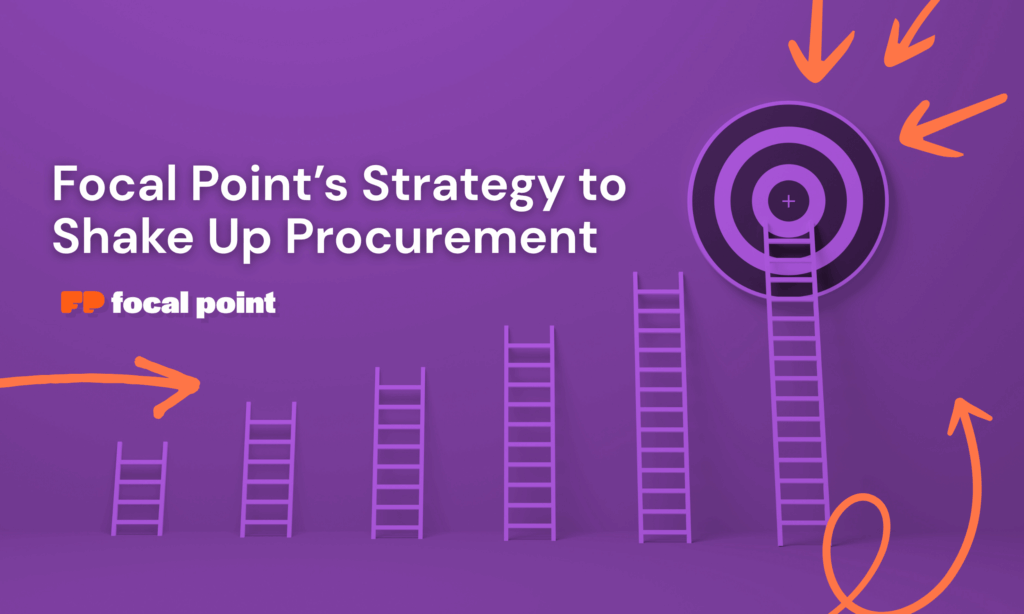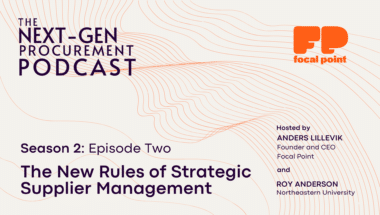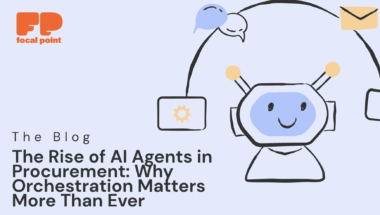When we started Focal Point five years ago, our goal was to completely rethink procurement from the ground up. That may sound like a familiar claim. Every tech founder says they’re reimagining their industry. But we weren’t chasing a flashy opportunity like ridesharing or vacation rentals. We focused on something less visible (and perhaps less sexy) but deeply important: how modern enterprises manage procurement.
Defining Our North Star
Many software companies start by building a product, then go hunting for a problem. For me, it was the opposite. After two decades in procurement, leading teams, managing suppliers, and dealing with fractured systems, I didn’t need to look far to find the problems. I had lived them.
Knowing the painpoints wasn’t enough though. We needed a clear direction. So we stepped back and asked the most important question: what’s the real problem we’re trying to solve?
We kept returning to the same insight. Every Chief Procurement Officer (CPO) I knew was being asked to deliver efficiency, manage risk, enable ESG, support the business, and control spend. However, they lacked a unified way to orchestrate it all. Procurement leaders were expected to do everything without a solution to actually do it.
That was the challenge we set out to solve.
What Needed to Change
Around the same time we started, a number of new tools were entering the market. Many have scaled rapidly and are extremely successful in solving specific aspects of the procurement process, such as intake, sourcing, contract storage, or approvals.
These point solutions are often well-designed and useful, but they don’t fully connect the dots. Solving one or two aspects of procurement might relieve short-term pain and act as a patch, but it does not address the broader problem. The truth is that procurement has evolved but the tools have not.
Data remains scattered across systems. Teams spend too much time toggling between emails, spreadsheets, ERPs, CLMs, internal portals and yes, procurement point solutions. Visibility is limited. Cycle times are long. Strategic opportunities are lost in the gaps.
We realized that no point solution, no matter how advanced, can fully support what procurement leaders need today. The procurement function had become too complex and too interconnected. What was missing was not another standalone tool. What was missing was orchestration, so that is what we built.
What We Built and Why It’s Different
Early on, we faced a critical decision. We could chase features, or we could focus on the foundational questions that matter most to modern procurement leaders. We chose the latter. Every product decision we made (and still make today) must answer three things:
- Does this empower people to collaborate and be more productive?
- Does this streamline procurement processes across teams, categories, and regions?
- Does it integrate with our customers’ existing tech stack and unify their data?
If the answer is no, we don’t build it.
Focal Point reflects how procurement actually works: as a continuous and virtuous cycle of sourcing, transacting, and managing. Each phase feeds the next. Each requires collaboration, transparency, and well-structured unified data.
We also made sure our solution integrates easily with a company’s existing tech stack. We built flexible workflows that adapt to how procurement actually operates in complex enterprises and created an interface that works for everyone involved in the process, including procurement teams, legal, finance, business stakeholders, and suppliers.
What makes Focal Point different is not just what it does. It is how we built it. We have been on the other side of procurement and know the difference between process for its own sake and process that elevates and advances procurement to the strategic function it’s expected to be.
What’s Next
Procurement is entering a new phase. AI and AI agents are beginning to reshape things once again. There is real potential here, but AI can’t magically solve inherently bad processes. A lot of companies are rushing to bolt on AI features to point solutions without first fixing the fragmented workflows and underlying data enabling processes.
Our vision with AI is to enhance human decision making, not replace it. That means embedding intelligence in the right places. We focus on surfacing risks, predicting outcomes, and offering recommendations. We believe AI should help procurement teams focus on what matters. The goal is not to remove people from the process. It is to make them more effective, more informed, and more strategic.



